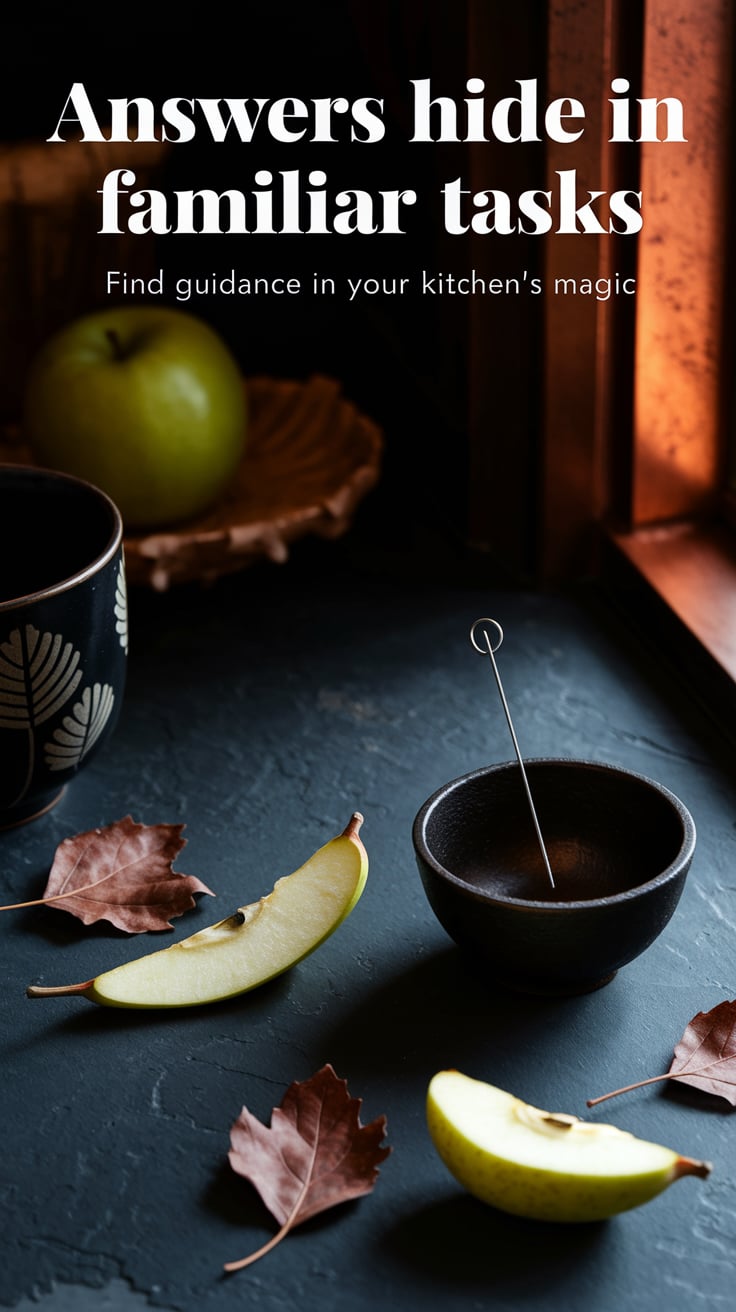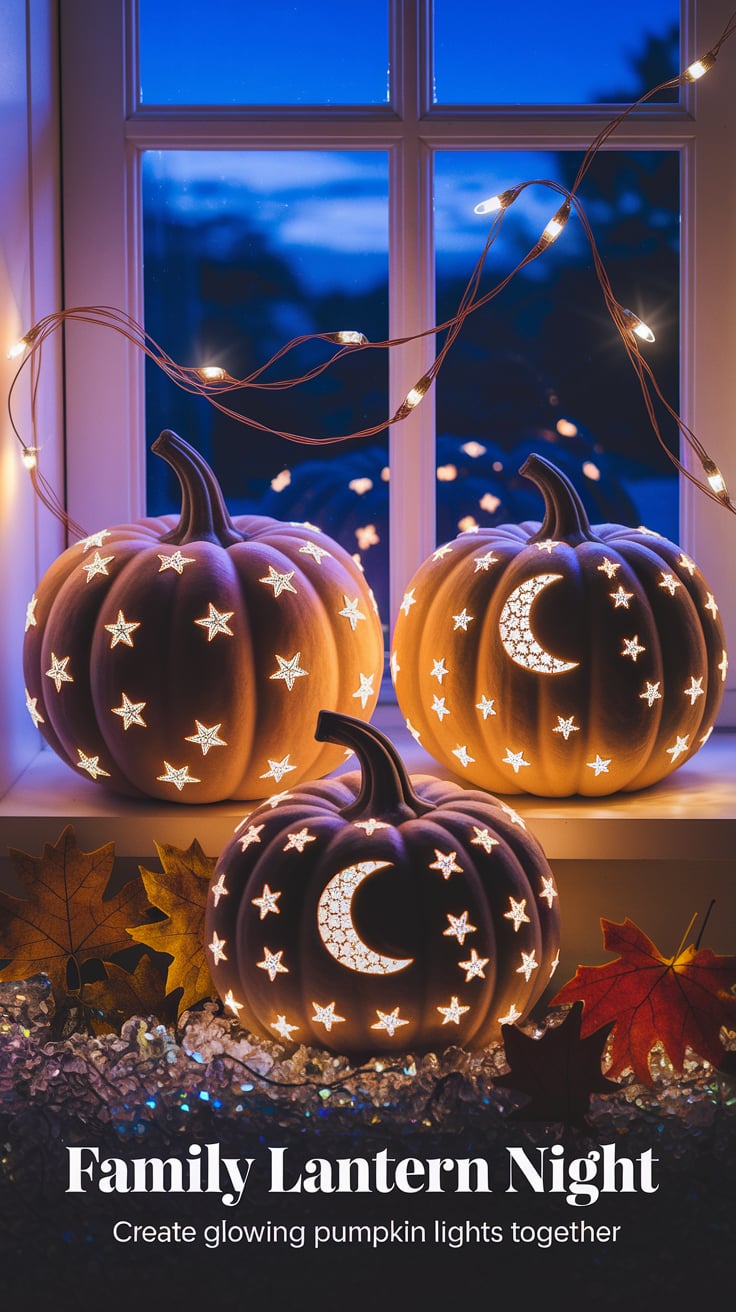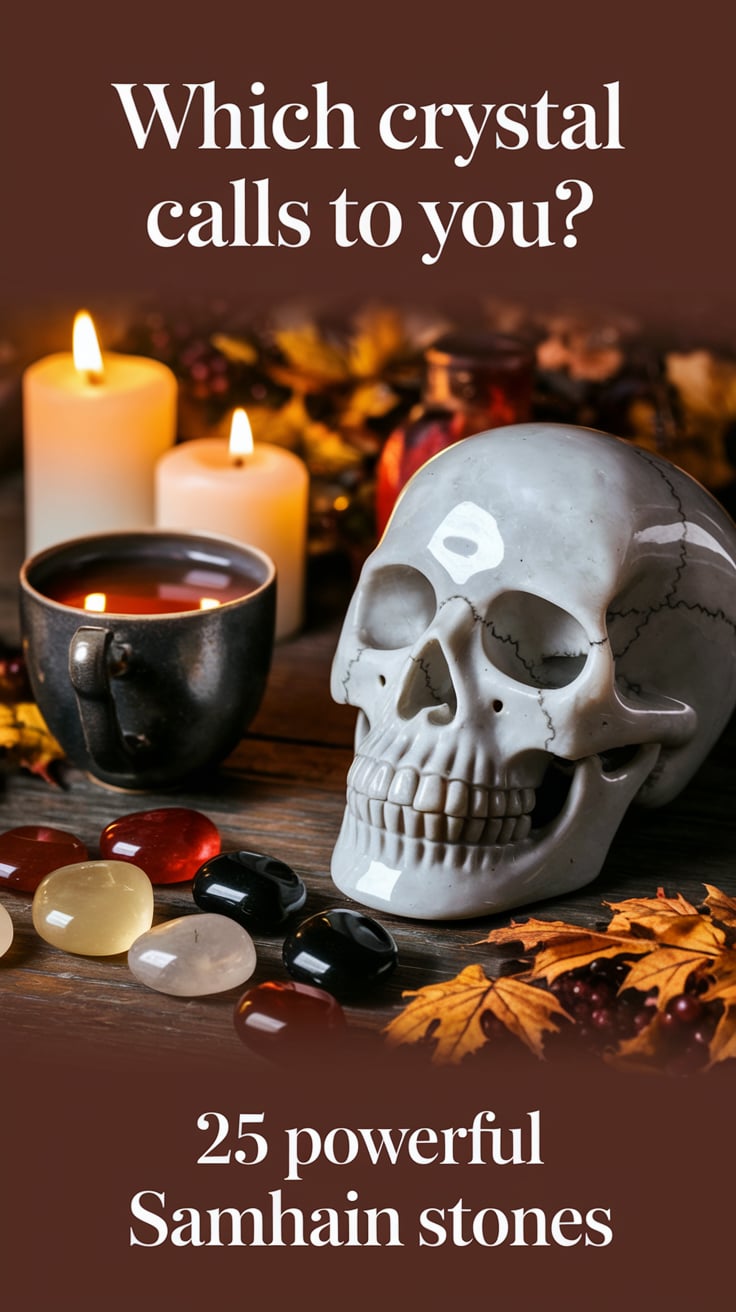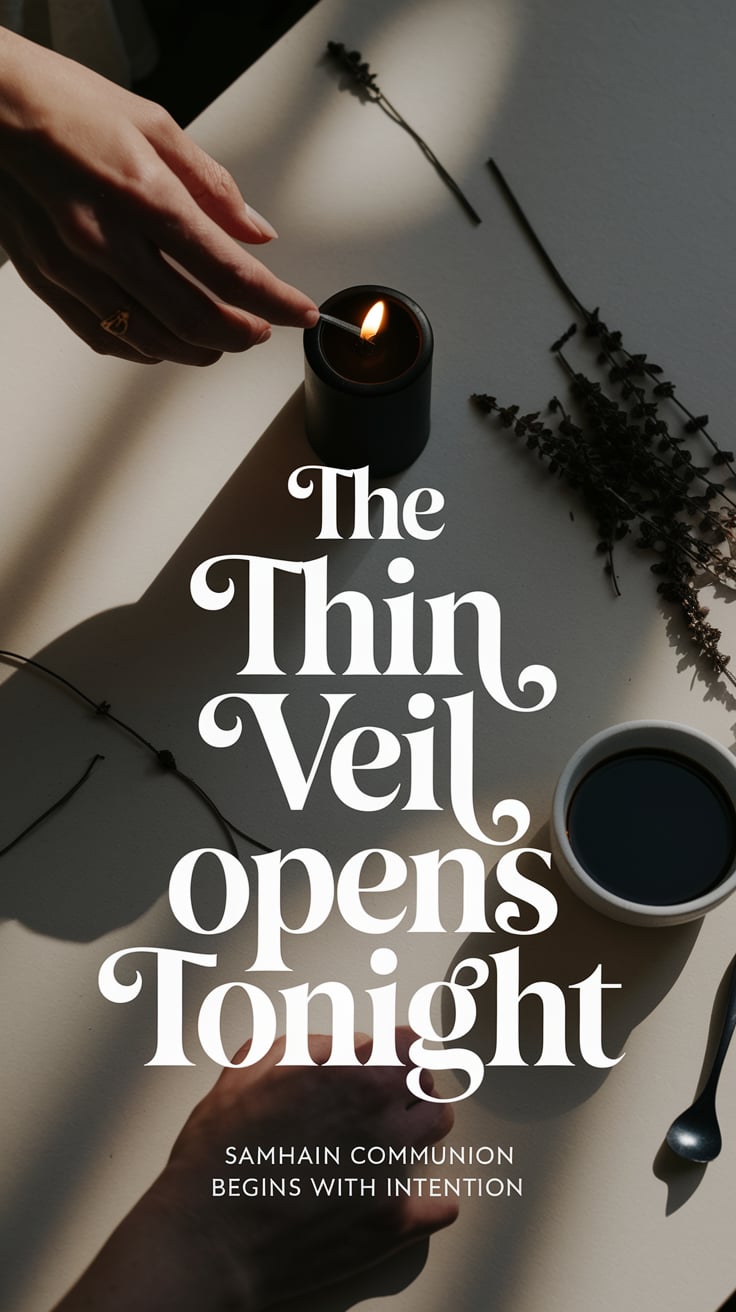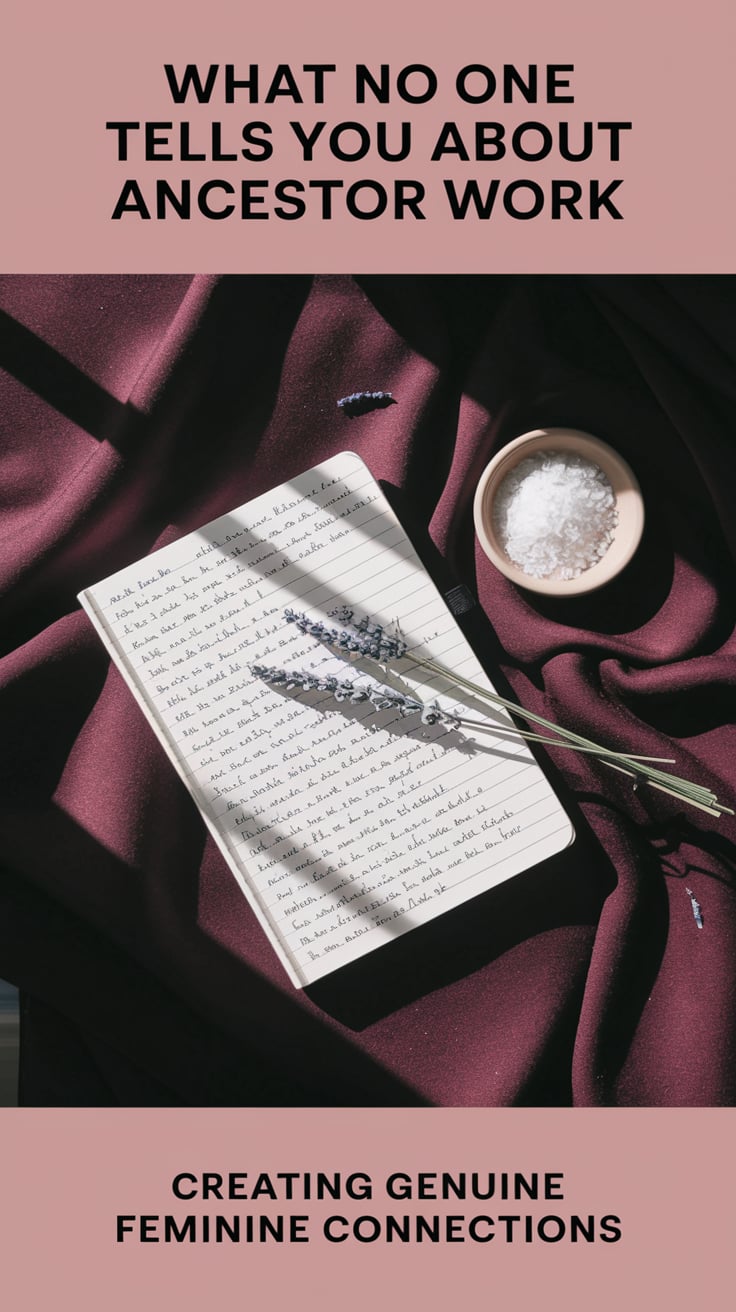American Folk Magic Pumpkin Bread: Samhain Ancestor Offering Recipe
Please note that posts on this site may contain affiliate links
Pumpkin bread belongs to Samhain. This moist, spiced quick bread works as ritual food, offering to the ancestors, or centerpiece for your sabbat feast. The recipe below makes two loaves: one for your table, one for the spirits.
The Recipe
Yield: 2 loaves (9×5 inch pans) Prep time: 15 minutes Bake time: 60-70 minutes Temperature: 350°F (175°C)
Ingredients
Dry ingredients:
- 3 cups all-purpose flour
- 2 teaspoons baking soda
- 1½ teaspoons salt
- 2 teaspoons cinnamon
- 1 teaspoon nutmeg
- ½ teaspoon ground ginger
- ½ teaspoon ground cloves
- 2 cups granulated sugar
Wet ingredients:
- 1 can (15 oz) pumpkin puree
- 4 large eggs
- 1 cup vegetable oil
- ⅔ cup water
Instructions
- Heat your oven to 350°F. Grease and flour two 9×5 inch loaf pans.
- Whisk together all dry ingredients in a large bowl.
- In a separate bowl, beat together pumpkin, eggs, oil, and water until smooth.
- Pour wet ingredients into dry ingredients. Stir until just combined. Some lumps are fine.
- Divide batter evenly between prepared pans.
- Bake 60-70 minutes. The bread is done when a toothpick inserted in the center comes out clean.
- Cool in pans for 10 minutes, then turn out onto wire racks to cool completely.
The bread stays moist for 3-4 days at room temperature if wrapped well. It freezes beautifully for up to 3 months.
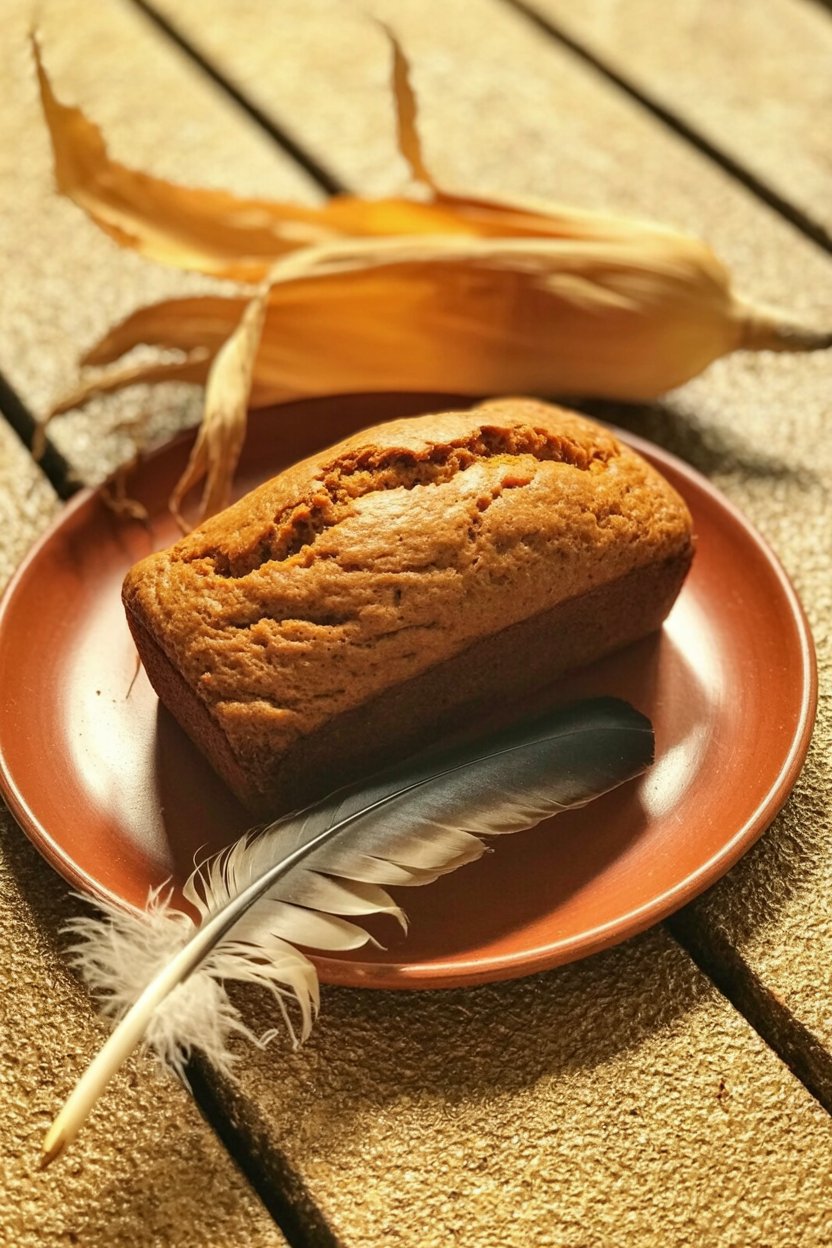
Why Pumpkin Bread For Samhain?
Traditional Irish Samhain celebrations centered on barmbrack, a yeasted fruit bread baked with divination tokens hidden inside. Find a ring and you’ll marry soon. Find a coin and wealth comes your way. The custom survives in Ireland today, especially around Halloween.
American pagans do it differently. Pumpkins grew everywhere the colonists settled. Quick breads (leavened with baking soda instead of yeast) take an hour instead of all day. The result is still Samhain bread. Still feeds the living. Still honors the dead.
You’ll find people online getting precious about “authentic” traditions. Here’s the thing. You’re baking bread at Samhain to mark the season, feed your people, and remember the dead. The pumpkin in your bread came from this continent’s soil. That’s American folk magic.
And it works.
The Magic In The Ingredients
Cinnamon is ruled by the Sun and fire element. At Samhain, when darkness increases, cinnamon’s solar nature balances the season. Also it makes your kitchen smell incredible, which is its own kind of magic.
Nutmeg supports divination and psychic work. The ancient spice trade routes brought nutmeg west at extraordinary cost. People died for this spice. Use it when you need to see beyond the veil.
Ginger cuts through spiritual fog. Its sharp heat strengthens magical workings. Kitchen witches keep it on hand year round because it’s useful for everything from protection to healing to hex breaking. (Also good for upset stomachs, which is handy after eating too much Samhain feast food.)
Cloves are Moon-ruled despite their heat. Perfect for liminal work at Samhain when lunar and solar energies intermingle.
Pumpkin grew sacred to Indigenous peoples long before European contact. When you bake with pumpkin at Samhain, you’re working with food that literally grew from this land’s bones. Food that survived multiple attempts at cultural genocide and showed up anyway, every October, bright orange and impossible to ignore.
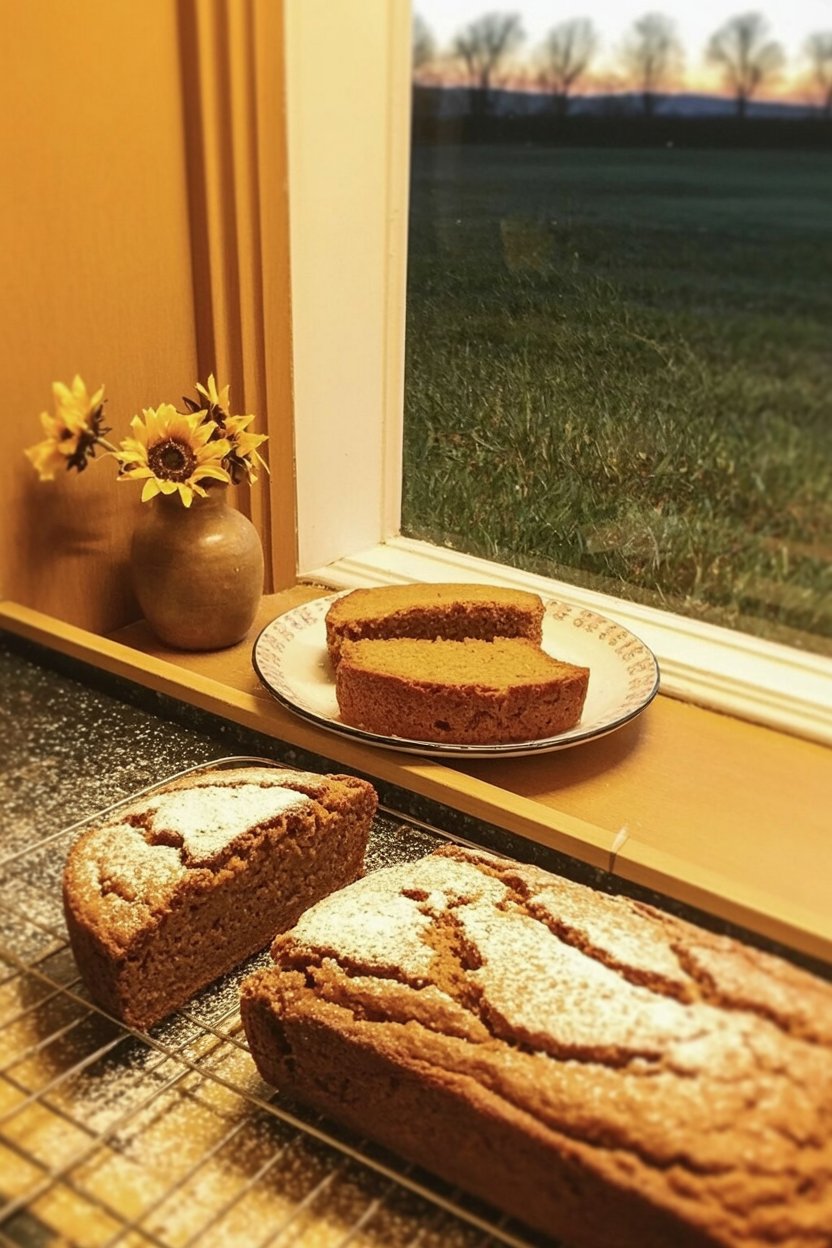
When To Bake Samhain Bread
October 30th works best. Bake in the evening. Your bread will be ready for Samhain eve, and your kitchen will smell like autumn and magic while you work.
Some witches bake on November 1st as part of their Day of the Dead observances. Mexican tradition honors the dead with pan de muerto, a sweet bread shaped like bones. American witches baking pumpkin bread participate in the same impulse: feeding spirits through food.
Moon phase matters too. The waning moon between October’s full moon and Samhain supports ancestral work and divination. The dark moon right before or during Samhain opens the deepest channels to the spirit world. Bake during these phases if you want to strengthen the bread’s connection to the dead.
Time of day shifts the energy. Dawn baking infuses the bread with fresh beginnings and welcomes benevolent spirits. But twilight baking? That’s the threshold moment. Between sunset and full dark, when this world and the next draw closest. That’s when you want your hands in the batter.
How To Use This Bread As An Offering
Ancestors eat through smell and essence, not physical consumption. What matters is intention and presentation.
Set up a dedicated ancestor space. Corner of your kitchen table works. A shelf works. A formal altar works. Include photos of your dead if you have them. Add items they loved. (My grandmother’s space has her reading glasses and a pack of Marlboro Reds she never got to finish.) White candle. Glass of water. Plate for food offerings.
Cut a generous slice while it’s still warm. The rising steam carries the offering across the veil. Place it on a clean plate or special dish reserved for spirit work.
Speak your intention. “For my beloved dead. I remember you, I honor you, I feed you.” Say their names. Tell them you’re thinking of them. Tell them what’s happening in your life. They want to know.
Leave the bread overnight. By morning, the bread looks the same to physical eyes but its essence has been consumed. The spirits took what they needed.
Dispose of offerings properly. Some traditions bury food offerings in the earth. Some leave them at crossroads. Some return them to nature in running water. Some composters feed offered food to the soil. Find what feels right for your practice. (I usually give mine to the crows who live in my neighborhood. They appreciate it more than the compost bin does.)
Never eat food offered to spirits. Once you’ve designated food as an offering, it belongs to the other world. Eating it invites boundary problems between the living and dead. Don’t do it. I don’t care how good it smells.
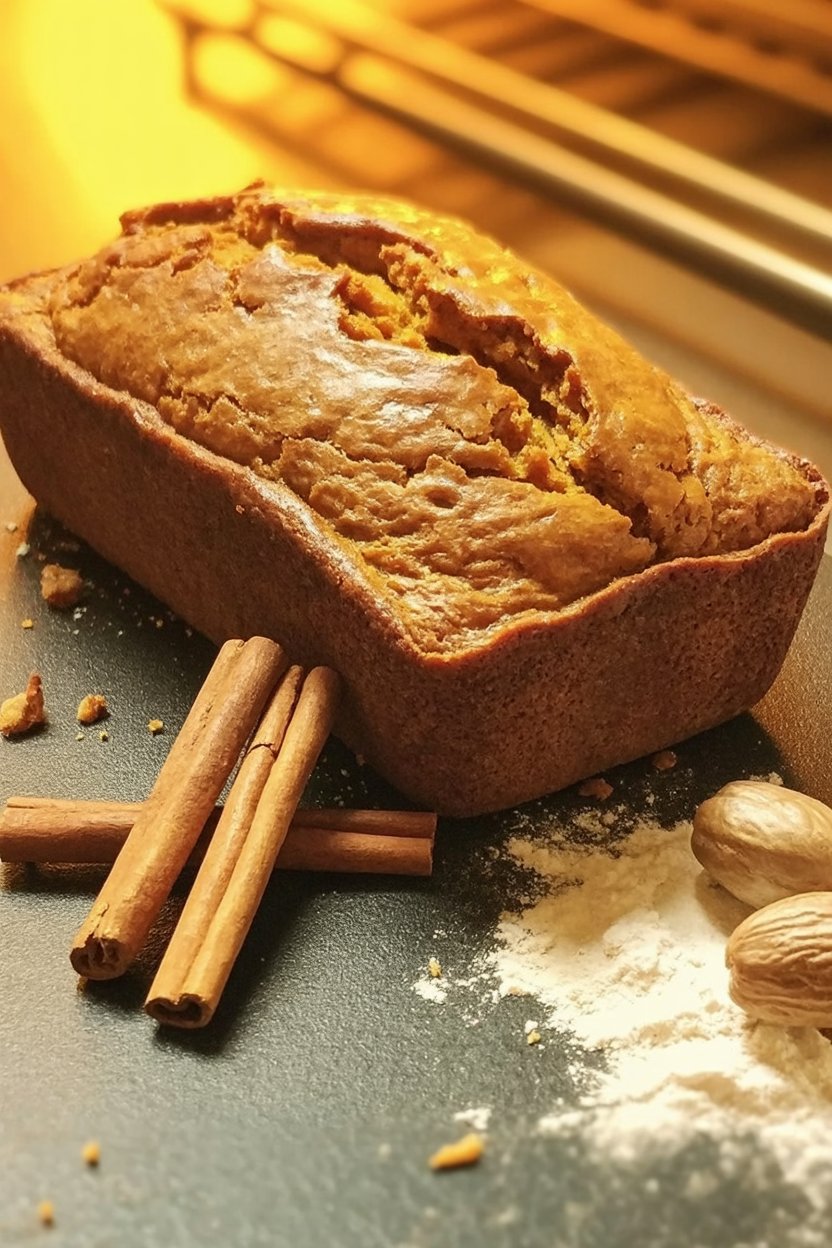
Making It Your Own
Add ingredients your ancestors loved. My grandmother put raisins in everything she baked, so my Samhain bread gets raisins. One year I added bourbon because my grandfather drank it every evening until he died. The bread tasted like him. Like memory made edible.
Chocolate chips melt into pockets of sweetness. Kids love them. And children’s joy at Samhain honors the season’s playful side, the part that remembers Samhain used to be a harvest party before Christianity made everything about sin and death.
Chopped walnuts or pecans add prosperity magic and tree wisdom. Toast them first for deeper flavor. Don’t skip this step. The difference between raw nuts and toasted nuts in quick bread is the difference between “fine I guess” and “holy shit this is good.”
Dried cranberries or cherries bring tartness and blood-red color. Red foods at Samhain honor sacrifice and transformation. Also they look cool, which matters when you’re trying to make aesthetic altar photos for Instagram.
Orange zest brightens the spice profile. Adds more solar energy to balance the dark season.
Bourbon, dark rum, or apple cider can replace up to half the water. Your bread won’t be boozy after baking, just deeper and more complex. Like you added layers you can’t quite name but definitely taste.
Pumpkin pie spice can replace the individual spices if that’s what you have. Use 2 tablespoons total. The magic works because intention works, not because you measured exact ratios like you’re in a chemistry lab.
Gluten-free flour substitutes measure-for-measure in most modern blends. The texture changes slightly. The purpose remains.
What Makes This Different From Regular Baking
Kitchen witchcraft transforms cooking into magic. You’re working with ingredients that carry power, timing that aligns with natural cycles, and intention that shapes reality.
Stir clockwise while you mix. This direction draws things toward you. Abundance. Connection. Blessings. Stir counterclockwise when you’re banishing or releasing something. Don’t mix them up unless you want confusing results.
Hold your intention while you work. Think about Samhain. Your ancestors. The harvest. The turning year. Let those thoughts flow into the batter. You’re literally mixing magic into the bread. This is real. This works. I’ve been doing it for fifteen years and I can tell the difference between bread I baked with intention and bread I baked while arguing with someone on Reddit about whether chaos magic counts as “real” witchcraft.
Speak words while you bake. A simple charm works: “Bread of Samhain, bread of power, honor the spirits in this hour.” Repeat it while you mix, while you pour, while you wait for the oven timer. Spoken words shape magical outcomes. Always have. Probably always will.
Carve sigils into the unbaked loaves. Use a knife to draw protective symbols, runes, or simple X marks on top before baking. The marks will rise and spread as the bread bakes. The intention stays.
Bake with awareness. Notice how the batter looks. How it smells. How it feels when you pour it into the pans. Pay attention to the moment you slide the pans into the oven. Watch the bread rise through the oven door if you want. (I always do. Something hypnotic about watching dough transform into bread.) The magic lives in your attention as much as in the ingredients.
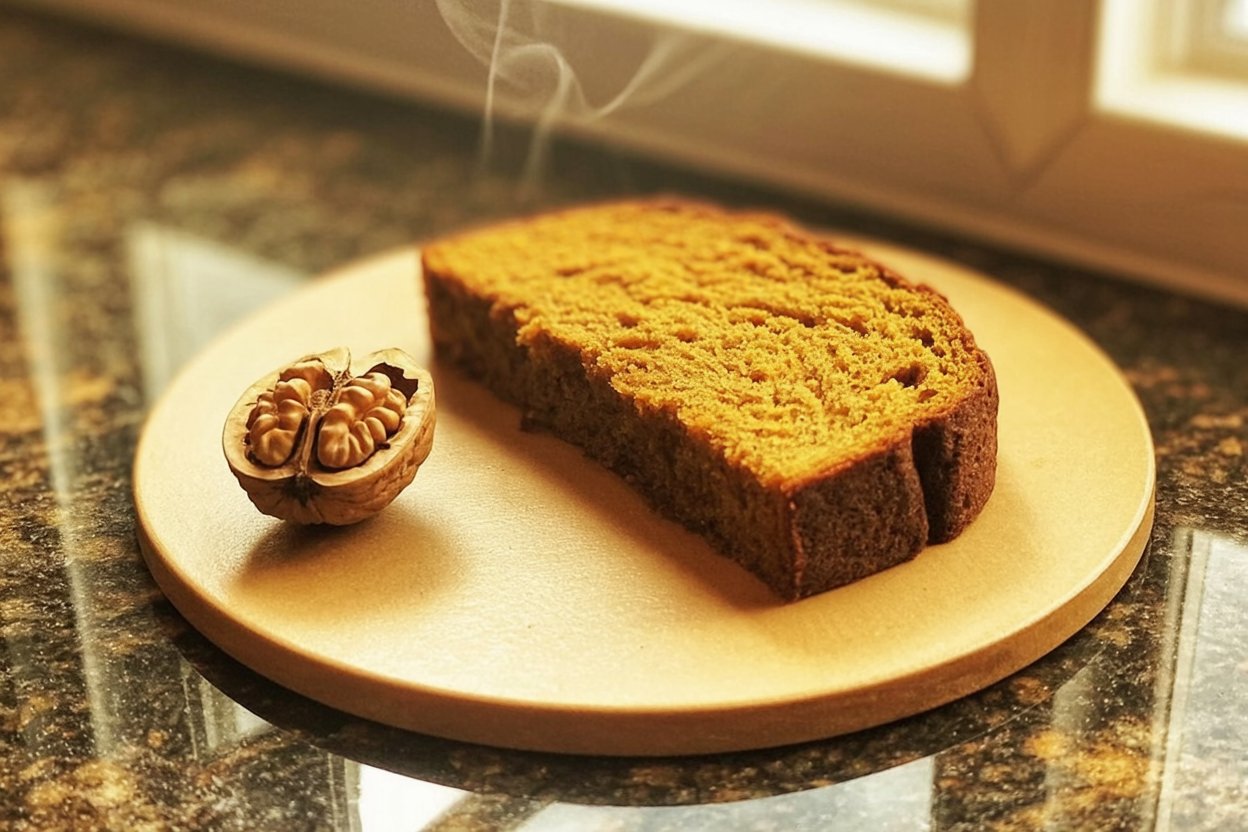
Sharing The Harvest
The recipe makes two loaves. One for your household. One for sharing. Split that second loaf among friends, neighbors, covenmates, or people who need feeding. Every slice carries Samhain’s blessing forward.
Bring bread to group rituals. Most pagan gatherings welcome food contributions. Bread feeds people literally and symbolically. It’s grain transformed by fire, just as Samhain transforms the year from light half to dark half.
Leave bread for the hungry. Food banks always need donations in November. Leave wrapped slices where homeless folks gather. Feeding those in need honors the dead across many traditions. Practical magic meets practical need.
The Bread On Your Altar
Place this bread at the western quarter if you work with directional correspondences. West holds water, emotion, autumn, and the gateway to the otherworld. Your Samhain bread fits there naturally.
But honestly? Put it wherever feels right. Set bread beside ancestor photos. Pair it with seasonal foods: apples, pomegranates, nuts, root vegetables, dark wine. Light a candle. (White works. Black for wisdom and protection works. Orange for harvest and energy works. Purple for spirit communication works. Pick one. Don’t overthink it.)
If you’re celebrating Samhain over several days (the traditional three-day festival), swap out the bread daily. Each night gets fresh food. Your ancestors deserve fresh offerings, not stale leftovers you forgot about until they started growing mold.
Storage And Practical Notes
Room temperature: Wrap cooled loaves tightly in plastic wrap or aluminum foil. They’ll stay moist for 3-4 days on the counter. Don’t refrigerate. Refrigeration dries quick breads out and makes them taste like sad cardboard.
Freezing: Wrap cooled loaves in plastic wrap, then aluminum foil, then slide into freezer bags. They’ll keep for 3 months. Thaw overnight on the counter or slice frozen pieces and toast them. (Frozen pumpkin bread, toasted with butter, is one of December’s small perfect things.)
Mini loaves: Use smaller pans for gift-sized portions. Reduce baking time to 35-45 minutes. Check doneness with a toothpick. These make good offerings for people who helped you this year. Mail carriers. Delivery drivers. The teenager who mows your lawn. Small kindnesses deserve acknowledgment.
Muffins: Fill muffin tins two-thirds full and bake 20-25 minutes at 350°F. You’ll get about 24 muffins. Perfect for ritual cakes-and-ale portions. Also perfect for grabbing one on your way out the door when you’re running late to work because you stayed up too late watching WitchTok videos about Samhain altar setups.
Testing doneness: A toothpick inserted in the center should come out clean or with just a few moist crumbs clinging to it. If you see wet batter, keep baking. Check every 5 minutes. Don’t open the oven door constantly or your bread won’t rise properly. I know it’s tempting. Resist.
Pan preparation: Grease thoroughly and dust with flour, or use baking spray with flour already in it. Pumpkin bread sticks stubbornly to pans if you skimp on this step. I learned this the hard way. Multiple times. Because I’m stubborn and optimistic and keep thinking “maybe this time it’ll be fine.”
It’s never fine.
The Living Tradition
Humans have baked ritual breads for thousands of years. Egyptian temple workers fed the gods with bread offerings. Greek worshippers left bread at Hecate’s crossroads. Medieval bakers shaped soul cakes for the dead at All Souls Day.
Your kitchen continues this lineage. Electric ovens instead of hearth fires. Measuring cups instead of handfuls. Canned pumpkin instead of roasting your own. (Nobody has time to roast their own pumpkin. If you do, congratulations on your abundant free time. The rest of us are using canned.)
The tools change. The heart stays the same. You’re making food sacred through intention, timing, and love.
Samhain asks us to remember. This bread helps you remember in the most human way possible: through feeding people. Through feeding spirits. Through the smell of cinnamon and nutmeg filling your kitchen while October dies outside and November waits at the threshold.
Bake the bread. Honor your dead. Share with your living.
The year turns. The wheel keeps spinning. You’re here to mark its passing.

